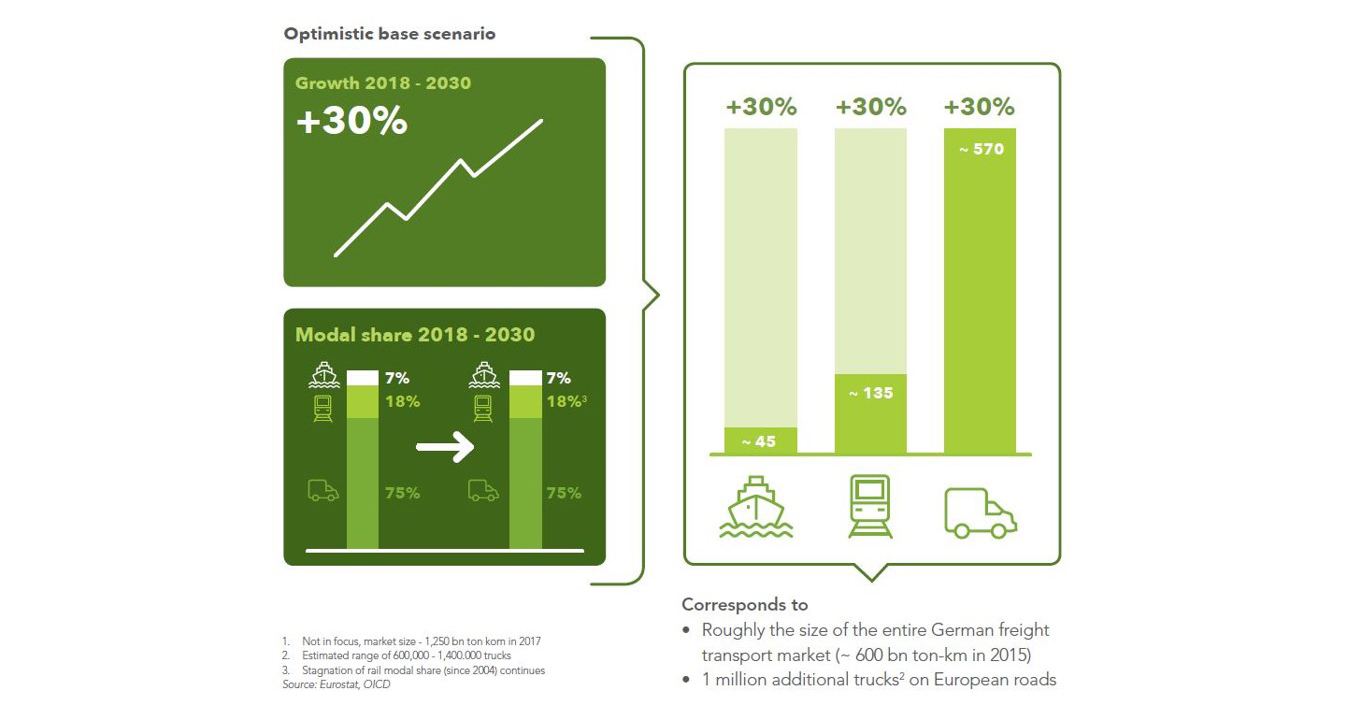The fight against climate change remains a hot topic in Europe. As it should be. In political debates, media reports, academic studies and suggested climate policies, the focus is mainly on the role individuals can play to help decrease carbon emissions and improve their ecological footprint. European citizens should leave their car at home and take the bus or train; companies should encourage alternative modes of transport to the company car...
Nobody disputes that transport is an important sector for CO2 savings, but why are we mainly talking about passenger transport? Freight transport emits an estimated 275 million tons of CO2 per annum, representing 30% of total transport sector emissions.[1] The carbon emissions by freight are mainly caused by our excessive use of trucks, which represents 75% of all freight transport. Those CO2 emissions will grow at least another 30% over the next ten years.

The shift from road to the much more climate-conscious rail is a no-brainer: rail produces 8 times less air pollution and emits 9 times less CO2. We have to get off the road. Urgently. This is true for both passenger and freight transport.
At the moment, there are not that many concrete actions to tackle CO2 emissions due to goods transport. However, when a small number of companies are encouraged to shift to rail, the positive impact will be considerable. The integration of freight into any climate policy will prove to be a major contributor to combatting climate change.
As European rail freight organisations, we aim to draw public attention to rail freight as a feasible solution for reducing carbon emissions. Our ambition is to double the volumes of goods transported by rail by 2030 – a concrete target for the modal shift. Any future transport policy that wants to take the climate seriously must take rail very seriously. We strive to give rail freight its rightful spot on the policy agenda, everywhere in Europe.
[1] Sources of all figures can be consulted in our white paper.